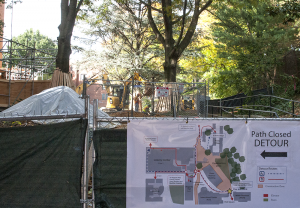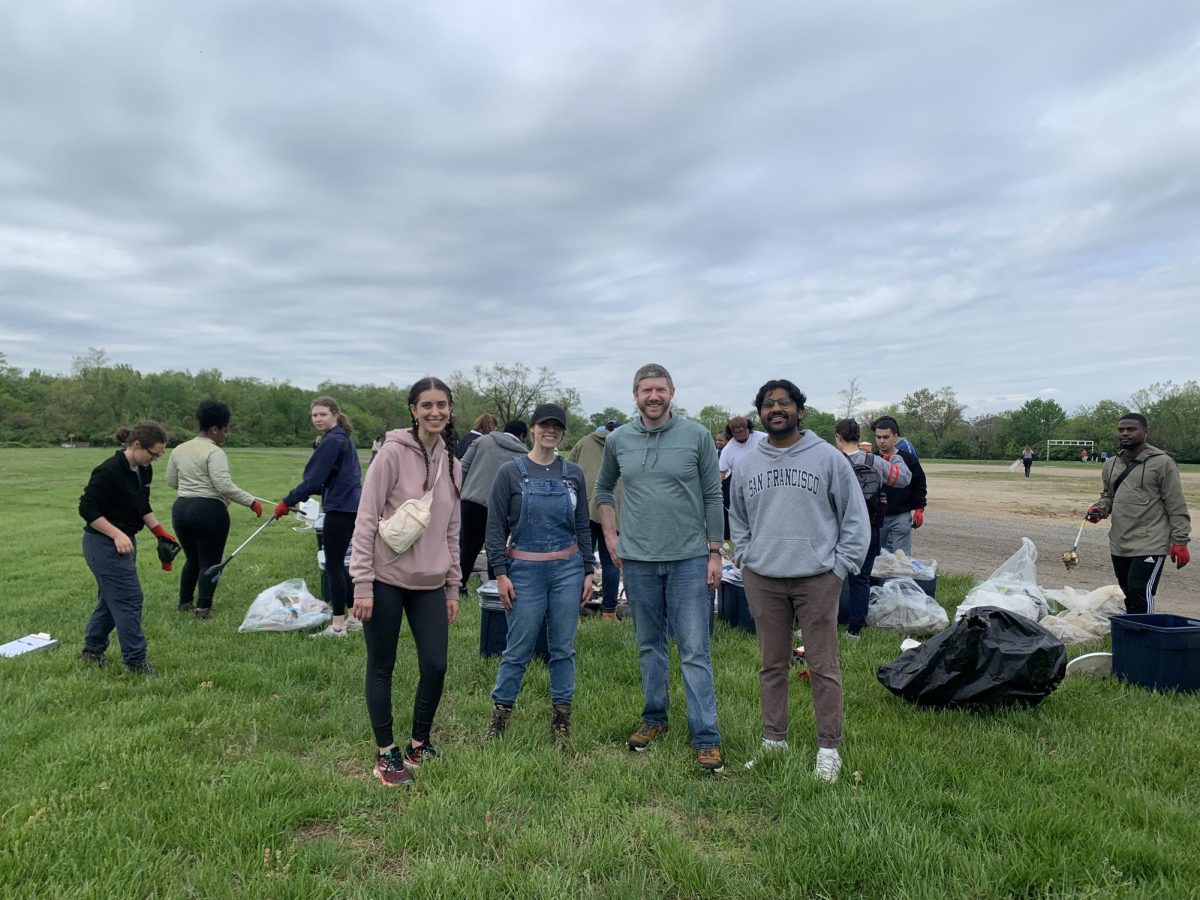
Following the Georgetown Community Partnership Steering Committee’s agreement to accelerate the 20-year campus plan, GUSA will seek to ensure that the final plan adequately incorporates student opinions.
The Georgetown Community Partnership Steering Committee agreed Friday to accelerate the drafting of the university’s next campus plan over the next six months and anticipates filing a finalized 20-year plan with the District of Columbia by the end of the summer.
According to Georgetown University Student Association President Joe Luther (COL ’16), the first draft of the 2017-2037 Campus Plan is anticipated to be available to the entire community in April.
The campus plan is the city zoning approval for the university to use its land for future construction projects and current utility. Universities in residential areas of the District are required to obtain formal approval from the D.C. Zoning Commission to operate land within a residential area.
The decision to move the schedule forward came after representatives of GUSA, MedStar Georgetown Hospital, the Burleith and Foxhall Village Citizens Associations and Georgetown University met Friday afternoon to discuss goals for the first draft.
Among the priorities discussed were MedStar Georgetown’s plan to construct a new surgical pavilion in the north of the university campus and the need for students and residents to have sufficient time to review and comment on the plan before this semester ends.
“This is something we have been talking about through all of last semester,” Luther said. “We had talked with the university and the neighbors about our perspectives and my biggest concern is that there is a completed draft by the time the semester ends, because I think it is really important that we create this first draft while school is still in session so they [students] can input commentary.”
Luther said moving up the release of the draft will make it easier for students to have their voices heard.
“One of my biggest concerns was that a finalized draft would be released in the middle of the summer and no one would be here to voice our really big student priorities and I’m really glad we were willing to take that into account,” Luther said.
Luther said although the official drafting for the campus plan has not yet begun, GUSA’s objectives are clear.
“It comes down to students having the freedom to live on or off-campus and having on-campus housing that is comparable and well-maintained,” Luther said. “We share the same goal with the university and the neighbors to make campus an attractive place to live and to learn, but if the university’s facilities and academic spaces are falling apart, then it is completely natural that students will want to live off-campus.”
GUSA’s objectives on behalf of students living on and off campus include freezing the construction of additional housing projects until renovations of existing living spaces are made, setting off-campus neighborhood noise standards to the District of Columbia level and ensuring that off-campus residents have access to individual trash bins outside their homes instead of a university proposed communal trash collection site.
According to the campus planning town halls, the university’s goals are new, high-quality green spaces, a more developed residential living-learning community and a more pedestrian-friendly campus.
Assistant Vice President for Strategic Communications Stacy Kerr said the partnership between students, administration and community members signifies that there are many aligned priorities between students and university administration.
“We are grateful for the GUSA leadership and other student leaders and community leaders who have made the GCP a successful model for developing our campus plan in a collaborative way that will benefit the university and our partners in the neighborhood and city,” Kerr said.
This is the first time the campus plan will be drafted with significant input from student representatives through the GCP, which was created after the difficult 2010 Campus Plan negotiations resulted in Georgetown missing the deadline to submit a plan to the D.C. zoning commission.
GUSA leaders involved in the GCP said they hope to avoid some of the missteps taken during the last round of campus plan negotiations.
“The last campus plan was really a ‘Georgetown Neighborhood Plan’ that wasn’t very representative of student interests, needs, and wants,” Speaker of the Senate Enushe Khan (MSB ’17) said. “The fact that renovations are currently not a priority for the university because they are trying desperately to meet that housing requirement shows that.”
According to Khan, the last campus plan was catered toward settling the neighborhood councils’ disputes and not on advocating for student needs.
“We have a list of demands and priorities for students that we’ve been advocating to be put in to the next campus plan, and during this drafting phase, that’s really what we’re pushing for,” Khan said.
GUSA Vice President Connor Rohan (COL ’16) said student priorities must come first in this new plan.
“I want to make sure that everything in that plan is good for the students and good for the university,” Rohan said. “I do not want to include any major provisions here that will harm students or divert resources away from students or educational programming when it is not necessary.”
Both university and GUSA representatives are optimistic about the GCP approach to campus plan negotiations and anticipate the consensus driven approach could be a model for other universities.
“What we are doing now is very different from how we’ve operated in the past,” Kerr said. “If we are able to be successful in working toward a consensus over the next six months, it will really be providing a framework that is better for everyone over the next twenty years. That’s the genius of the Georgetown Community Partnership. It really is a model for the country.”
Teddy McFarland (COL ’17) said that because campus affects students most, it’s important that they have their voices heard.
“More student input is always great. We’re the bulk of this campus; we’re living on it all four years so we should have input,” McFarland said.
According to Maggie Bautista (COL ’19), it is important that students living on-campus have the opportunity to shape the place they live.
“Especially for people who live on campus they have to navigate the campus more … it’s a good thing [that there will be more student input],” Bautista said.
Rohan said he’s optimistic for the new plan.
“I want to get the most utility out of this plan as possible,” Rohan said. “From what we’ve discussed with the neighborhood and the university, it seems like this plan is going to be very different from the last one, which is great.”




















